Cristobal Balenciaga – The Purist
Cristobal Balenciaga (1895-1972) Spanish
The style of Cristobal Balenciaga was a mixture of simplicity, minimalism, and drama in powerful colors and dynamic shapes. He used fabrics that could form and support his structured clothing such as taffeta, silk gazar, faille, upholstery weight wools, and mohair. However, his clothes differed from his contemporary Christian Dior, in that he created a looser line than Dior did, with his barrel back jackets, kimono-shaped, bracelet-length sleeves, and ballooning shapes. His designs were pared down and rather than molding a predetermined shape for the figure, they instead skimmed the body.
Balenciaga was inspired by non-western clothing and religious-influenced or ecclesiastical garments. His clothes were known for their elegant starkness and austerity. This was most likely a result of his goal to reduce the decoration of garments to only the most essential.
Balenciaga was temperamental, secretive, and very private. Because of this, pictures of his work are very hard to come by. In fact, he would rarely let photographs of his collections be taken, expect for the few exclusive editorials in Vogue magazine by photographer Irving Penn. An example of his difficulty with the press: he chose to show his collections a month later than the other Paris houses, which caused a conflict for the foreign press who then needed to return because of his importance and reputation in dressmaking.
Luckily, you may have a chance to see Balenciaga’s work in person this year as the Met is hosting a retrospective of his work with the Queen Sofía Spanish Institute. The exhibition, Balenciaga: Spanish Master, conceived by Oscar de la Renta and curated by Hamish Bowles, has been open since November 19, 2010 and will run until February 19, 2011. For more information, see here and here.
His style, innovations, and influence on fashion:
- He is credited with showing the first “pillbox” hat in 1958, which became a fad when Oleg Cassini chose the style as part of Jackie Kennedy’s European-influenced wardrobe.
- Favorite colors were cinnamon, black, brown, white, turquoise, and deep rich red for evening.
- His signature fabric, a crisp silk gazar, was also a favorite of Hubert de Givenchy.
- Instead of padding, he used stiffened fabric to create the permanent shapes for his balloon-like silhouettes.
- Introduced the non-existent waistline with his 1957 “sack” dress, a style notably satirized on an episode of I Love Lucy.
- The balloon jacket, balloon skirt and the baby doll silhouettes were all his creations.
Sources: Dressmakers of France, (1956) Mary Brooks Pickens, Dora Loues Miller; Secrets of the Couturiers, (1984) Frances Kennett; Fashion (2003) Christopher Breward; 100 Dresses, (2010) Costume Institute at The Metropolitan Museum of Art; The World’s Most Influential Fashion Designers (2010) Noel Palomo-Lovinski.

 Sign In
Sign In

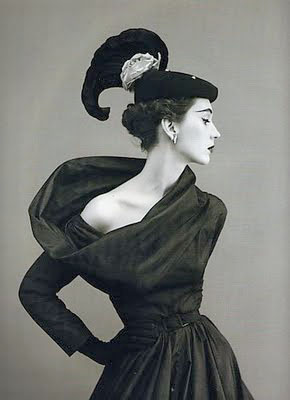
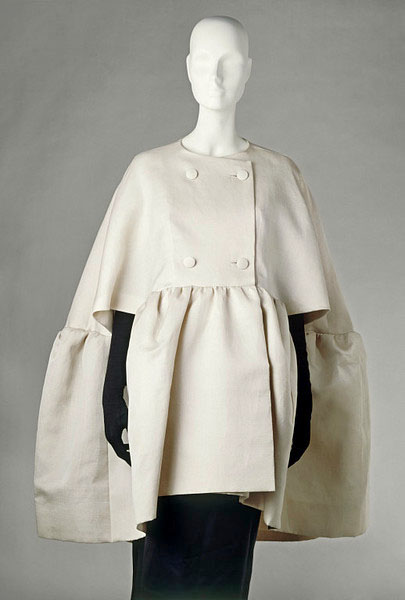
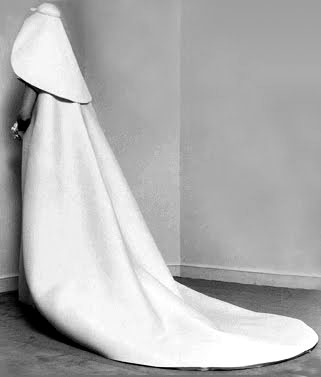
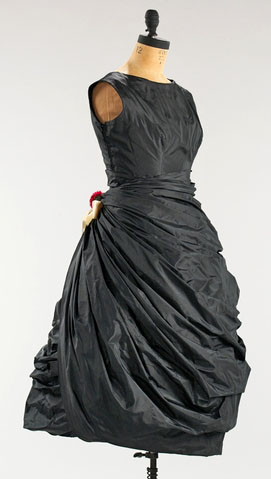
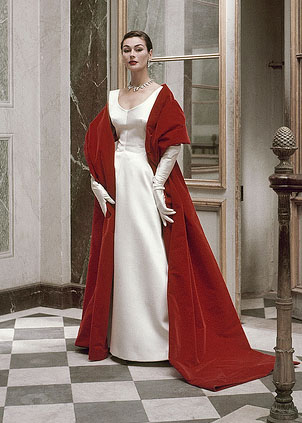

Comments
Stephanie
January 6, 2011 #
I absolutely loved that episode of I Love Lucy. It is funny how fashion often loses it’s beauty in an attempt to be avant-garde.
Becky
January 7, 2011 #
I am thrilled to go see this next weekend! The catalogue will be out in March, a bit of a miss on timing, but still.
Lucy and Ethel and Cristobal=fun : )
jenne
January 7, 2011 #
so excited to see that this exhibit will be moving to the west coast and open at the De Young on March 26th! I wonder if its going to be the same catalog or reflect a more expanded show. http://deyoung.famsf.org/deyoung/exhibitions/balenciaga-and-spain